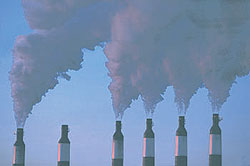Exploiting biomass potential for energy production
Biomass has the potential to produce electricity by means of gas turbines or fuel cells with increased demands on hydrogen-rich fuel gases with reasonable high heating values. This was achieved by applying heat for the endothermic gasification process to a reformer by means of high temperature heat pipes. The so-called 'Biomass Heatpipe Reformer' is aided by micro-turbines and fuel cells and is suitable for small-scale Combined Heat and Power (CHP) applications. The BioHPR project also investigated the potential of this system for large scale applications, particularly aspects of the hot gas cleaning system. Thereby, for product gas contaminant category including particles, alkalis, tars and acidic compounds, hot gas cleaning methods were reviewed. The specification of the optimum temperature window within which the cleaning is performed was derived using a process simulation software. The reliable software provided accurate and precise thermodynamic calculations of the product gas composition and phase equilibrium. Optimal operation temperatures for hot removal of contaminants or direct feeding the product gas to the turbine should fall between 600°C-200°C. The behaviour of the exit gas coming from the gasifier of the reformer through possible cleaning devices before entering the micro-turbine was extensively investigated. These results can be used as a standard guideline for designing a large-scale gas cleaning system. Furthermore, an overview of the biomass potential in the ten most recent Member States and in three of the Candidate Countries was also completed. Results showed that in the majority of the countries biofuels could be used alternatively for generation of the 10% of the electricity currently produced. Agricultural and forestry residues could be considered as the primary sources for these biofuels coming from the reformer or any other small-scale gasification technology. In contrast, Municipal Solid Waste (MSW) was found to require a more complicated gas cleaning system, which is more appropriate for large-scale applications.







